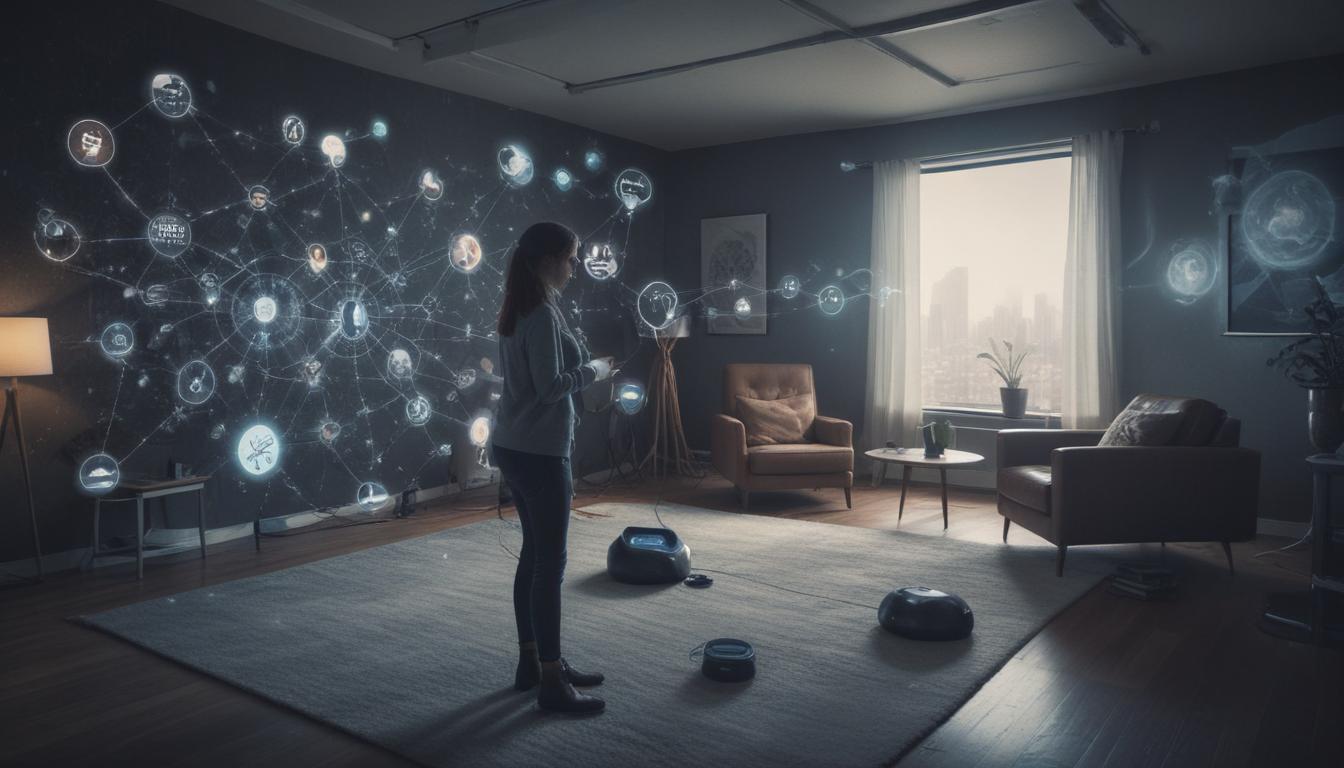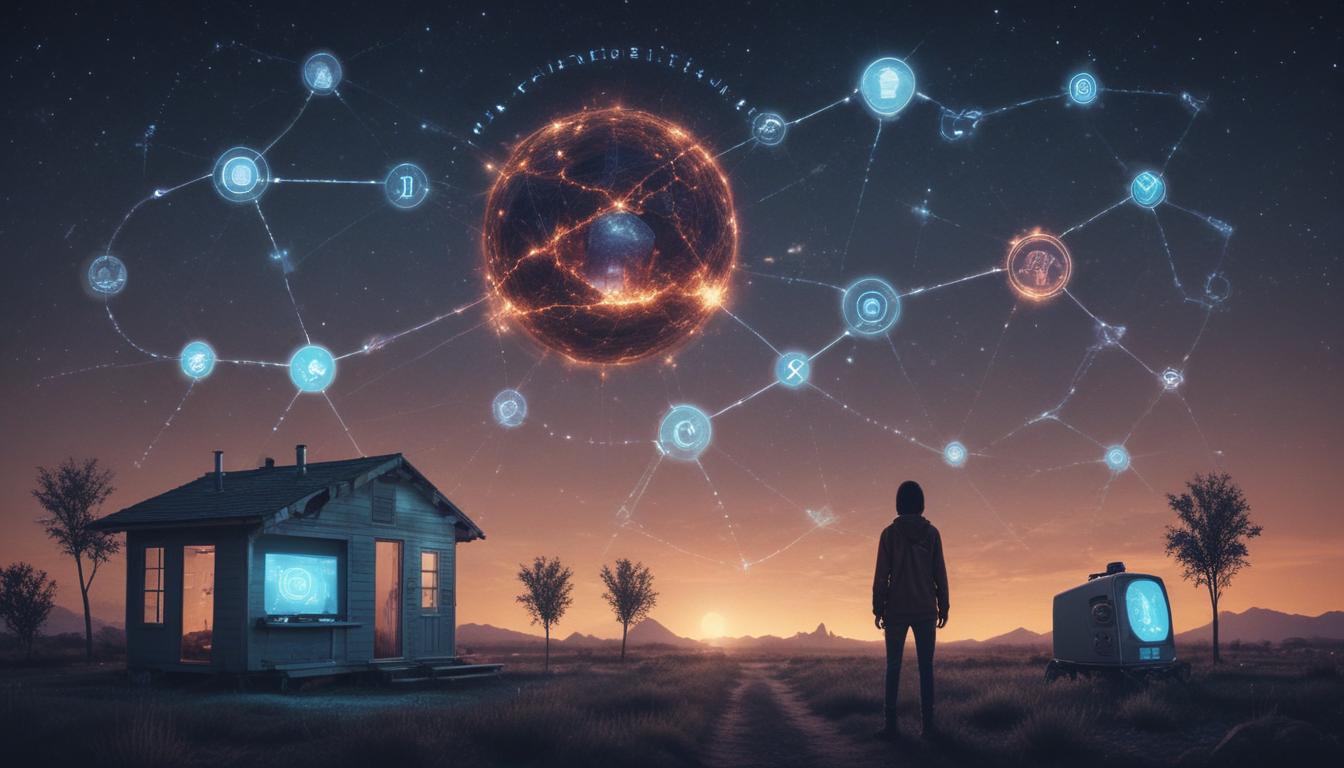Now Reading: IoT Connecting Everything Around You
- 01
IoT Connecting Everything Around You
IoT Connecting Everything Around You

The Internet of Things Connecting Our World
Have you ever heard the term “Internet of Things” or “IoT” thrown around in a conversation and found yourself nodding along, not entirely sure what it really means? You’re not alone. It sounds complex, futuristic, and maybe even a little intimidating. It’s easy to dismiss it as technical jargon for engineers, but the truth is, IoT is already a part of your life and is quietly reshaping the world around you in profound ways.
This guide is here to pull back the curtain on the Internet of Things. We will break down this powerful technology into simple, understandable terms. Forget the complex diagrams and confusing acronyms. By the time you finish reading, you will understand what IoT is, how it works, and most importantly, why it matters to you, your home, your health, and the future of our cities.
What Exactly is the Internet of Things
At its core, the Internet of Things is a simple concept. It refers to the vast network of physical objects, or “things,” that are embedded with sensors, software, and other technologies for the purpose of connecting to the internet and exchanging data with other devices and systems. Think of it as giving a digital brain and a voice to everyday items that were previously “dumb.” Your coffee maker, your watch, your car, and your refrigerator can now communicate with you and with each other.
For this connection to work, IoT systems rely on a few key components. First, there are the sensors that collect data from the physical world, such as temperature, motion, light, or location. This data is then transmitted over a network connection like Wi-Fi, Bluetooth, or 5G to a central system, often in the cloud. There, the data is processed and analyzed. Finally, a user interface, like an app on your smartphone, allows you to interact with the device, view the data, or set up automated actions based on the information gathered.
How IoT is Changing Our Daily Lives
The impact of IoT isn’t some distant future promise; it is happening right now, making our lives more convenient, efficient, and safe. From the moment you wake up to the way your city manages traffic, connected devices are working behind the scenes. This technology is moving beyond simple gadgets and is becoming the backbone of smarter living environments.
The true power of IoT is realized when these devices don’t just report information but act on it intelligently, often by communicating with each other. This creates a seamless and automated experience where your environment anticipates and responds to your needs without you having to lift a finger. This level of integration is transforming industries and personal routines alike.
Smart Homes From Science Fiction to Reality
The smart home is perhaps the most relatable example of IoT in action. Devices like smart thermostats learn your heating and cooling preferences to save energy, while smart speakers allow you to control lights, music, and more with just your voice. Smart security cameras send alerts to your phone when they detect motion, giving you peace of mind whether you’re at work or on vacation. These individual devices are useful on their own, but their real magic lies in their ability to work together.
Imagine this scenario your car’s GPS, an IoT device, detects that you are ten minutes from home. It sends a signal to your smart home system, which then turns on the entryway lights, adjusts the thermostat to your preferred temperature, and even starts playing your favorite “welcome home” playlist. Your smart refrigerator might have already noted you’re out of milk and added it to your grocery list. This isn’t science fiction anymore; it’s the interconnected ecosystem that IoT makes possible, creating a home that responds to your life in real time.
Beyond the Home Health and Cities
IoT’s influence extends far beyond home convenience. In healthcare, wearable devices like fitness trackers and smartwatches monitor your heart rate, activity levels, and sleep patterns, providing valuable insights into your well-being. This technology is also enabling remote patient monitoring, where doctors can track the vital signs of chronically ill patients from afar, leading to better care and fewer hospital visits.
On a larger scale, IoT is the driving force behind the development of “smart cities.” By embedding sensors across urban infrastructure, cities can operate more efficiently. Smart traffic lights can analyze traffic flow in real time to reduce congestion and emergency response times. Smart waste bins can signal sanitation crews when they are full, optimizing collection routes and saving fuel. These innovations are not just about adding technology for its own sake; they are about creating more sustainable, responsive, and livable environments for everyone.

The Future of a Connected World
As billions more devices come online, the potential of the Internet of Things will only continue to grow. However, this massive expansion also brings significant challenges that we must address. Data security and privacy are paramount. With so many devices collecting personal information, from your location to your health metrics, ensuring this data is protected from hackers and used ethically is one of the most critical issues facing the industry and society.
Looking ahead, the fusion of IoT with other technologies like Artificial Intelligence (AI) and 5G will unlock even more powerful capabilities. 5G networks will provide the ultra-fast, low-latency connectivity needed for devices to communicate instantaneously, while AI will enable these devices to learn, reason, and make decisions on their own. From self-driving cars that communicate with each other to avoid accidents to smart factories that predict maintenance needs before a machine breaks, we are only at the beginning of a new industrial and social revolution. The Internet of Things is not just connecting devices; it is seamlessly weaving our physical and digital worlds together.



































